Since the early 1970’s, award-winning journalist and author Gail Collins has had a finger on the pulse of American politics, local and national. Wit and insight have been her hallmarks from her beginnings at the Hartford Advocate to becoming the first woman editorial page editor for The New York Times.
I thought, Wow! I could really get people interested in state government if you made it funny enough and entertaining enough. So, that’s how I got started writing the way I do. Gail Collins
Now with her 6th book No Stopping Us Now, Gail examines how women have been viewed, and valued age-wise through the centuries.
I can’t think of a better way to mark Women’s History Month than to speak with Gail who shared some thoughts with me as she prepared a recent presentation on her fascinating book for the Fairfield Museum and History Center in Fairfield, Connecticut.
EYE: Gail, do you consider yourself a trailblazer?
GAIL: The generation of women who came before me filed lawsuits, organized protests, and dedicated endless hours to fighting for equal opportunities in the newsroom – for jobs, promotions, the best assignments.
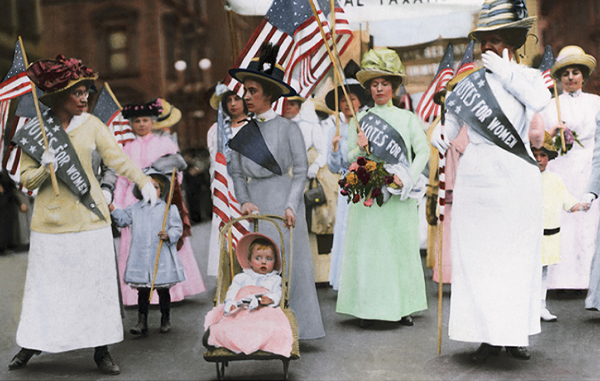
They won but they weren’t the ones who got the rewards. Those great opportunities went to people like me, who walked in the door right as the battles were being won.
I knew so many of those women and the amazing thing is – they aren’t bitter. They’re so proud and happy to see the changes they helped put into place, and they are huge cheerleaders for us all. To me that’s the definition of a great heart.
EYE: You’ve written about many women’s movements. What intrigued you enough to concentrate on older women?
GAIL: I like to write about women’s history. That’s what my books are about more and more. As I was going along, I would find little things at different periods in which older women were so differently regarded at different times, especially if you’re scarce. Even if you were 95 years old and there were not many women around, then you were very, very popular!
So I was following that idea and somehow I ran into stuff in the fifties like the commercials; when you were 20, you were old. It was a really different time.
Now it’s 2020 and we have Nancy Pelosi and Ruth Bader Ginsberg. So I was trying to figure out how this all went together. I came across stories I really loved and I just started playing around with it.
EYE: Is there a woman who stood out to you?
GAIL: One of the people I really never thought about much at all and whom I really got attached to was Margaret Chase Smith. She was so right on, so determined.
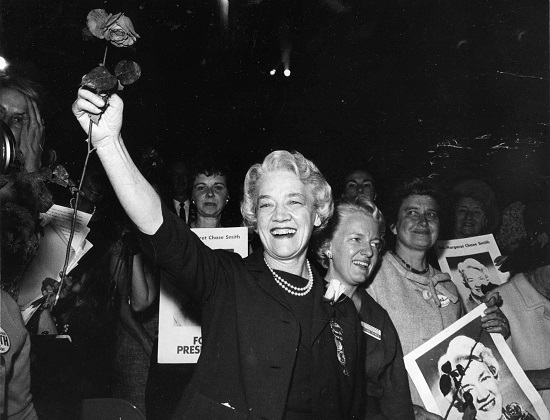
Photo: Margaret Chase Smith Library
You look back and see that this was a woman who was the first one to stand up against McCarthy, the first one to stand up against Richard Nixon’s horrible terrible Supreme Court nominations and she just kept on going and she ran for President, of course.
All they could write about was the fact that she was 66 years old and how shocking that was. Every single paper…”66 years old.” In an interview with the Los Angeles Times, she complained that everyone was always pointing out that she was 66 years old.
The headline in that piece was something like:
MARGARET CHASE SMITH 66 YEARS OLD COMPLAINS ABOUT PRESS COVERAGE
EYE: Do you think age today is really just a number?
GAIL: It depends upon what you are talking about. Certainly for people in the entertainment industry age is still a really really big deal. On the other hand, look at all the candidates who have run for President in the 2020 campaign on the Democratic side.
All the people over 70, their age is being talked about—except really Elizabeth Warren. She was just up there, running around, and nobody said is she too old to be President? as they did about Sanders and Biden.
EYE: What themes do you find still haunt women?
GAIL: It’s not a particular theme in this book, but there’s no way women have completely resolved the problem of balancing family and work. As it’s become more critical that almost all women work to support families in whatever income status you’re in, it’s just not resolved.
Until we figure out a way to deal with it for poorer people, then we are not going to figure out a way to deal with it for other people, either.
EYE: What have you taken away for yourself from this book?
GAIL: One is that for just so many women, even in periods when it wasn’t so great to be older or a housewife once you kids were grown, that women found ways to work in the community, to contribute to the community, did service work that was the thing that not only empowered the communities but empowered the women too.

That was something interesting to think about when you are thinking about ways to become active and strong as long as you live; you don’t think about social services and doing nonprofit work to be healthy, helpful and useful.
EYE: Do you consider No Stopping Us Now a call to action?
GAIL: EVERYTHING is a call to action in a way whenever you write about women’s history and you read about what other women have done.
I hope it’s a call to women to think about getting older as an opportunity, as well as, you know, a pain in the neck. haha‼! Optimism is always important. And, hanging out with women. The more you hang out with other women, the more things work out.
EYE: What advice or encouragement do you have for women of any age looking forward in years?
GAIL: Find things to do that you really care about that you can re-imagine and rework in different ways as you progress along in life.
Find things that you can contribute to that will need your contribution as you go along in life. Find things you really enjoy, just continue to fool around with, keep your friends and make new ones.
EYE: Was writing always something you loved, excelled in, even as a young student?
GAIL: Yeah, my mother wanted to be a journalist but she got married right after World War II and never got a chance to try for a professional career. But I instantly volunteered for the school paper when I went to high school, then went to a college (Marquette) that had a journalism major and then got jobs in little weeklies as soon as I graduated. Never really done anything else.

EYE: How did you decide on the editorial field rather than a reporter for your career?
GAIL: I started reporting in Connecticut. I had 60 or 70 state legislators that I was personally responsible for keeping track of every day to see what they were doing. I knew more about the state legislature in Connecticut on a personal level than any other human being possibly that was not elected to something.
There were some funny things happening that really didn’t work in a news story. Dick Pullman, Editor of the Hartford Advocate then, and I were talking and he asked me if I could write something for him.
He just said write about the state legislature because no one writes about it. Then, I started playing around with it some more and I had so much fun writing in a funnier way about it.

EYE: So you found that wit is your key to successful writing?
GAIL: Later on, I was writing for the Daily News covering city government. So many bad things were happening.
One day I woke up and thought I cannot make people want to jump out a window every day when they read the paper.
Let me find a way to write this stuff that gives them the information but is sort of amusing and fun to read. That’s the way I’ve tried to work things out ever since.
EYE: What impact do you want to have?
GAIL: So many things I write about is the idea to get people interested in stuff. I don’t expect them to necessarily go marching in to Town Hall. I just like the idea that they might be talking about it, having a drink and talking about it.
EYE: How did you become the first woman to be editorial page editor at The New York Times?
GAIL: The Times hired me to write about local government, which is what I’d been doing as a columnist at the Daily News and NewsDay. When Bill Clinton started having his impeachment problems, I had written a book about scandal and gossip in politics. I wrote a lot about sex and politics in back those days.
Then I moved on and wrote about a lot of politics. One day Hal Raines, who was the Editorial Page Editor of the New York Times back then, came in and said, “I’m moving down and I’m going to become the news editor downstairs, Arthur (Sulzberger, New York Times Publisher) and I would like you to become the next Editor.”
I said, “I can’t do that…I’ve never been an editor any place, except my little news service years ago.” I was babbling away. Hal said, “Look where we are now…there are not many chances to be the first woman to do something anymore, so unless you are planning on becoming Baseball Commissioner, I would really think seriously about taking advantage of this opportunity.”
I thought Wow, okay! The people were wonderful and I had a great time!
EYE: What informs your point of view?
GAIL: I think it’s pretty clear from my columns that I have a basic liberal perspective on the world. You’re always looking for someone who’s thought of a different way to do things, who has a new take on things that might move things in a good way.
There are people you can celebrate who do something great or people to make fun of in a general way for doing something stupid.
For years, I was always irritated with Mitt Romney because he would change his position so often on issues, depending on what he was running for.
I made fun of him by pointing out that he had once driven to Canada with the dog on the roof of his car.
It kind of became my Romney thing. And, it was such a long and boring Presidential race I started playing a game with myself to see if I could mention the dog every time I mentioned Mitt Romney. When he made his dramatic speech (about impeaching Trump), I got to announce that I was retiring the dog. It was a good moment.
EYE: You must have “mentored” many writers along the way. How do you evaluate the state of journalism today and looking to the future?

GAIL: Well, journalism seems fine when I look around the Times and see all the extraordinary people throwing themselves into so many important projects. But the industry in general is in a state of disaster.
The web has killed off newspapers around the country, and nobody’s figured out a way to make enough money doing serious local journalism online. Everybody I know who cares about the business — or about the communities going uncovered — is looking for answers.
EYE: Is there anything that surprises you?
GAIL: That’s the great thing about politics. You don’t ever get bored if you really pay attention. Politics, that’s my subject, and women’s history and sometimes they go together, which is even better.
EYE: Thank you, Gail for your time. Coincidentally, the nickname for The New York Times is “The Gray Lady, “ a lady who certainly has stood the test of time and continues to make an impact. May you, as the women you honor in your book, persist in making an impact with all your endeavors!
Lead Photo Credit: Nina Subin
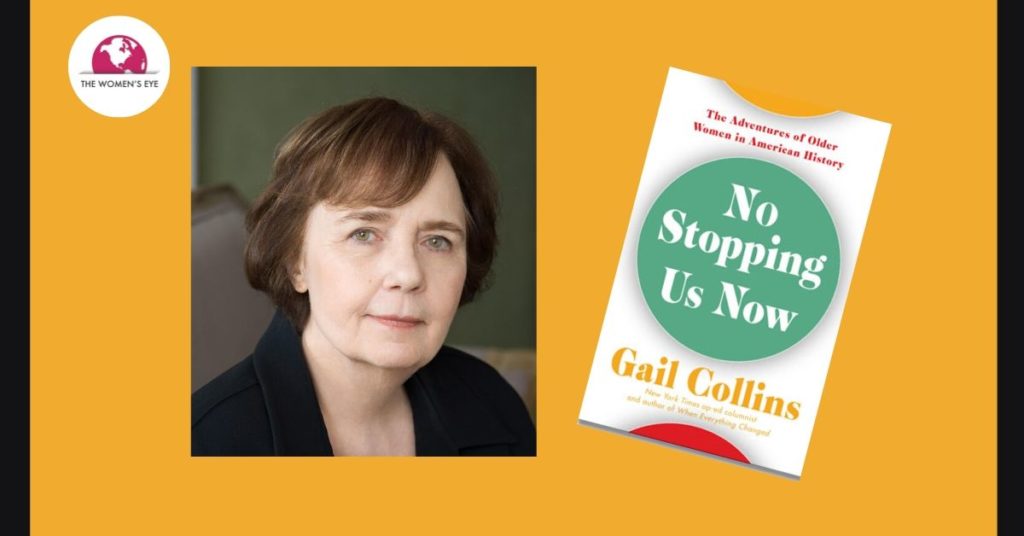
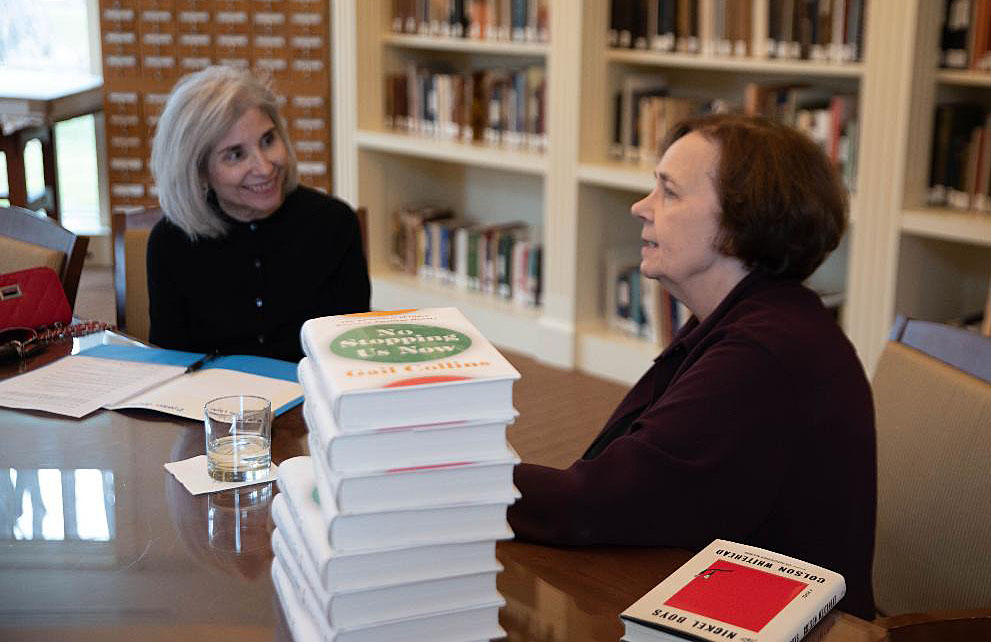
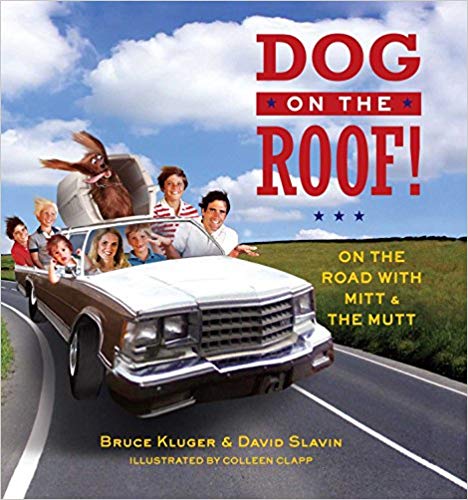

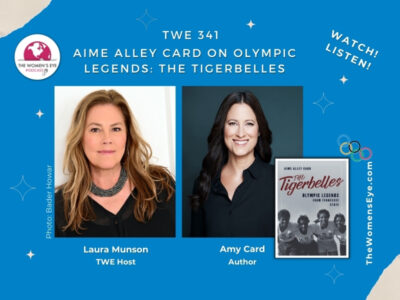

Leave a Reply